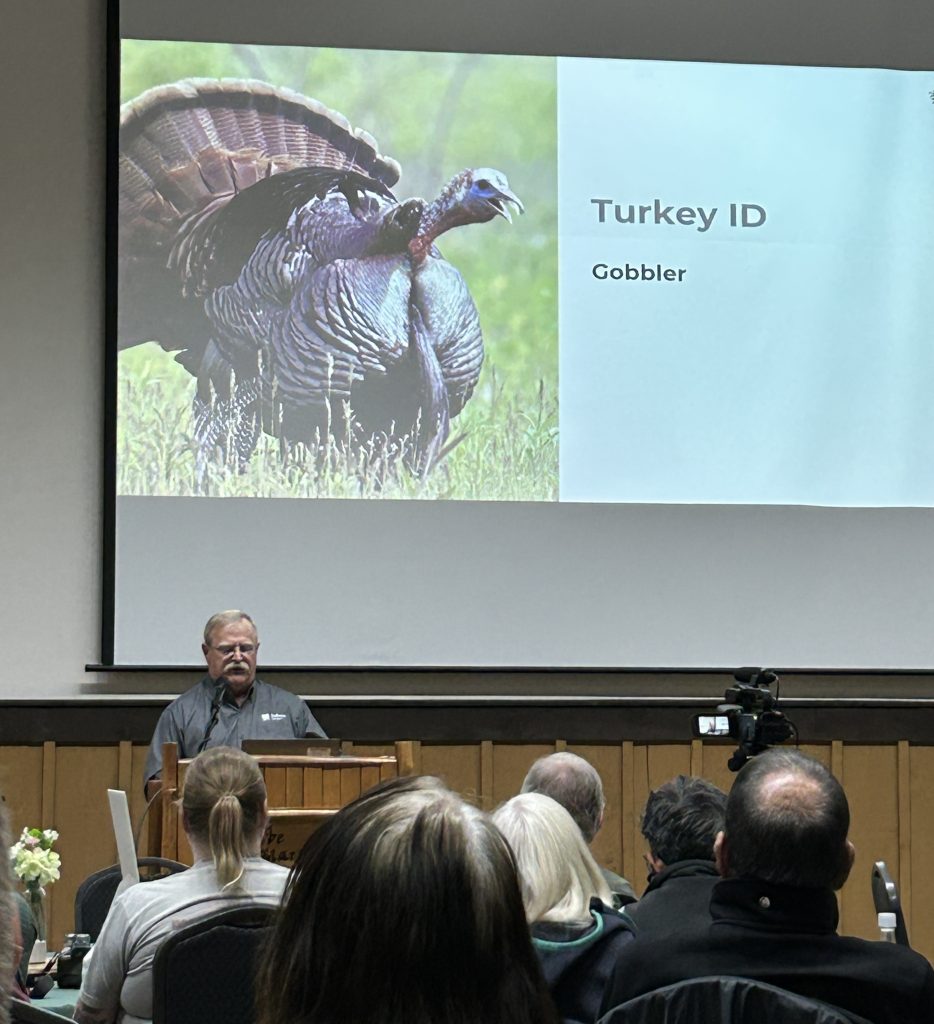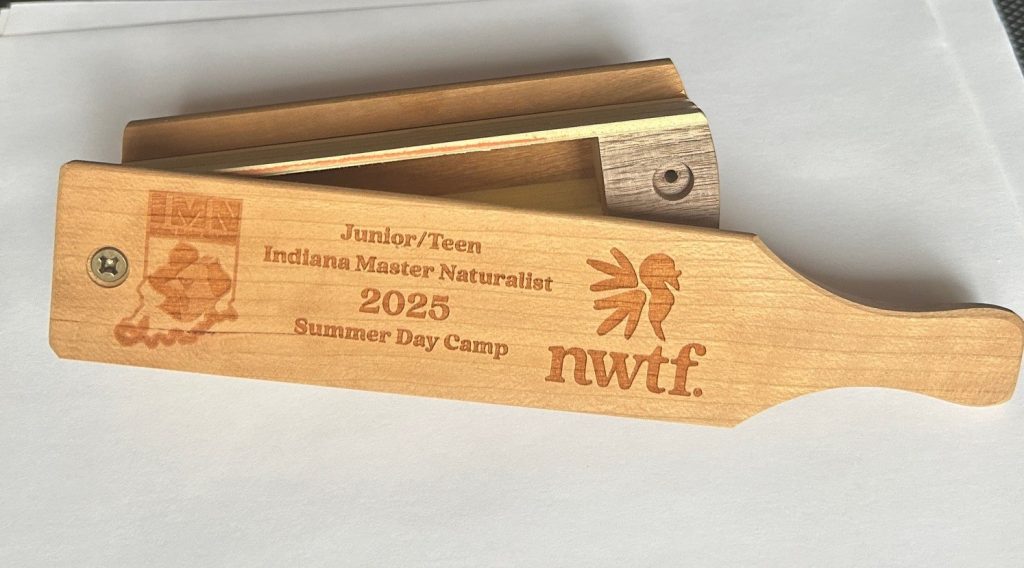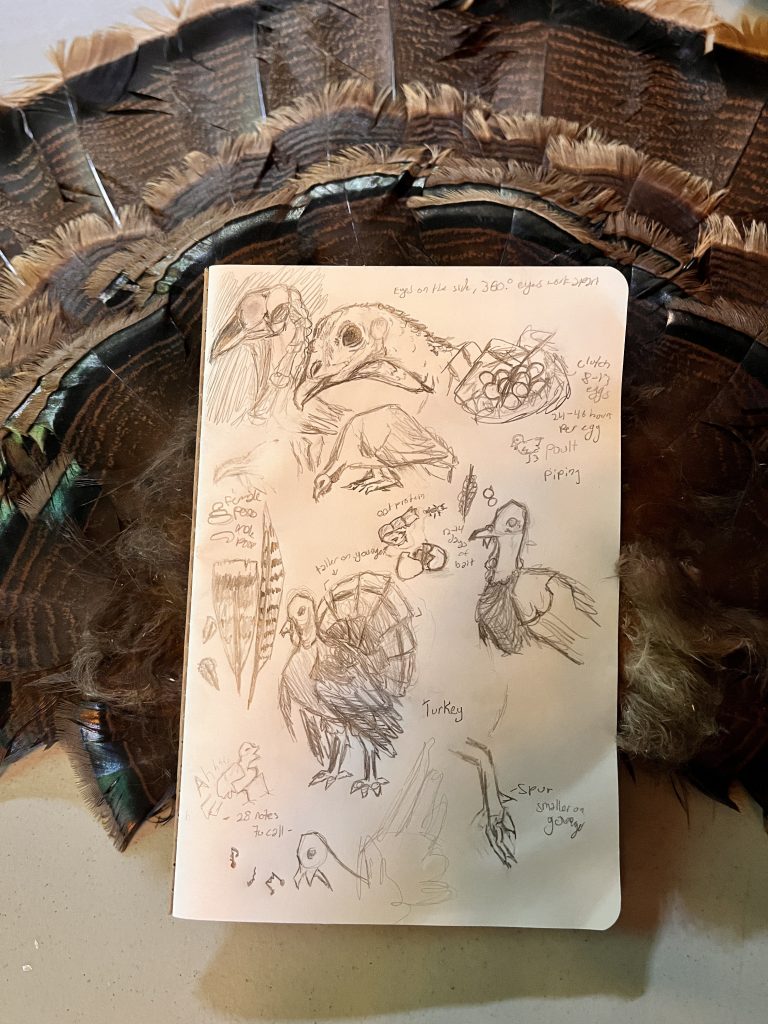NWTF Indiana and DNR Offer Wild Turkey Master Naturalist Courses
EDGEFIELD, S.C. — This past spring, Pat Navarre, Indiana NWTF State Chapter outreach and education chair, hosted two wild turkey education events as part of the Indiana Department of Natural Resources’ Master Naturalist Program. The mission of the Indiana Master Naturalist Program is to bring together natural resource specialists to foster an understanding of Indiana’s plants, water, soils and wildlife and to promote natural resource volunteer service within the state.
“Our goal is to educate the public with professionals for each topic,” said Jody Heaston, Indiana Master Naturalist coordinator. “We thought who better to talk about the wild turkey than the NWTF. They have been great partners for us to work with these past few years. At the adult class, we had over 100 adults, and everyone left with a new understanding and respect for the wild turkey.”
In April, the DNR held the Indiana Master Naturalist Program for adults at Brown County State Park. Navarre presented information about the NWTF and the wild turkey through a turkey-101 course. The presentation gave a brief overview of what the NWTF is and why the organization is vital in the world of conservation. Participants also learned about the reintroduction of wild turkeys to the state of Indiana.

“There were no turkeys here, and now there are,” Navarre said. “How did that come about? Well, the DNR trapped ruffed grouse and traded them to the state of Missouri for wild turkeys. A gentleman in the crowd was actually a part of the trap and release of grouse, so he was able to share his perspective. Attendees didn’t have any clue that this is a part of the state’s natural history.”
The wild turkey — from its incredible conservation success to the unique subspecies — fascinated attendees.
“I think everyone is always interested in hearing and learning the different types,” Heaston said. “The adults also always love to learn about the history of the species and the fact that there are five different subspecies in the United States.”
Like the adult class, the youth class captivated attendees.
This past June, the DNR hosted its annual Indiana Junior Master Naturalist Camp. Navarre and fellow Indiana NWTF State Chapter member Dion Jordan returned for the second year in a row to speak with over 50 children about the wild turkey. They shared information about the biology, life cycle, diet and vocalizations of the wild turkey. The pair also shared biology fun facts that encouraged youth to answer questions and participate.

“How many feathers does a turkey have,” Navarre said. “Five to six thousand. That gets everybody’s attention. And then we ask the kids what they think all these feathers are used for. Some of the kids would say flying, to keep them dry, etc. It was an interactive thing.”
Navarre also noted one of the young attendees was doodling in her notebook during the entire class. He thought she lost interest, but at the end, she introduced herself and showed Navarre what she was working on.
“At the end of our presentation, she came up and showed us her notebook,” Navarre said. “She had hand drawn pictures of a turkey [and] a turkey egg. Her way of learning and comprehension is to draw what she’s hearing, and she sketched this all out in her notebook. At our recent state board meeting, we talked about reaching out to her and having her sketch something we can use at our banquets.”

The Master Naturalist Program is currently available in 34 states and helps further environmental knowledge with the intent to encourage the protection of and remediation of natural habitats. Indiana started its program in 2002 and launched its junior program in 2009. They remain the only state with a youth version today, and they’ve seen great success.
“Since its beginnings, this program has seen over 5,000 participants, with half of them becoming certified,” Heaston said. “It also creates a great volunteer pool. Having an NWTF chapter so close to the park provides more opportunities for the master naturalists to get involved.”
Programs like these are an amazing opportunity for the NWTF to engage with new members and volunteers, allowing them to further see our work on the ground.
About the National Wild Turkey Federation
Since 1973, the National Wild Turkey Federation has invested over half a billion dollars into wildlife conservation and has positively impacted over 24 million acres of critical wildlife habitat. The NWTF has also invested over $10 million into wild turkey research to guide the management of the wild turkey population and to ensure sustainable populations into perpetuity. The organization continues to deliver its mission by working across boundaries on a landscape scale through its Four Shared Values: clean and abundant water, healthy forests and wildlife habitat, resilient communities, and robust recreational opportunities. With the help of its dedicated members, partners and staff, the NWTF continues its work to provide Healthy Habitats. and Healthy Harvests. for future generations.
